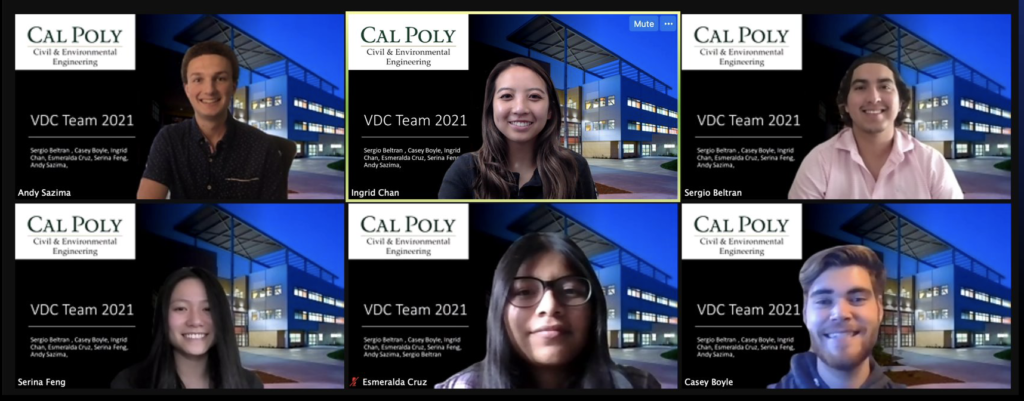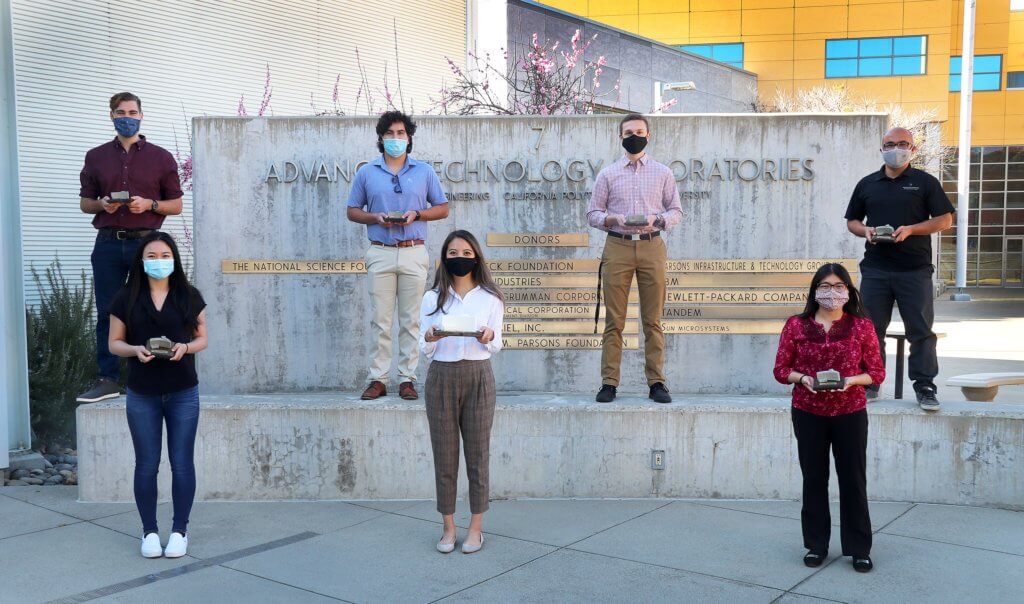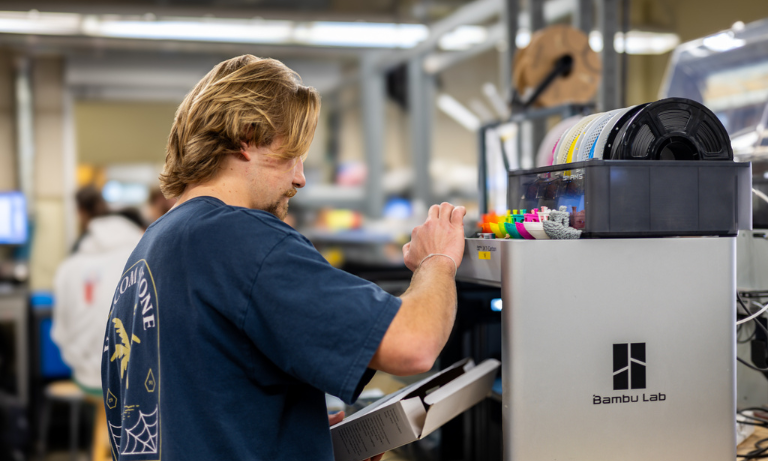A team of civil engineering students that evaluated a large virtual design hotel was one of four Cal Poly first-place winners during this year’s annual Associated Schools of Construction (ASC) student competition.
The team’s trophy was one of 11 that Cal Poly students won during the Region 6 and 7 competition, breaking the school’s record.
“We were honestly shocked because it was our first time ever competing in the ASC competition,” said Sergio Beltran, one of five Cal Poly students who took part in the Virtual Design and Construction (VDC) category. “We realized that the work we had been putting in since the beginning of the school year was worth it despite the long hours of practice because that feeling of accomplishment at the end was priceless.”
For the competition, the students were tasked with evaluating and solving the VDC aspects of the Grand Hyatt hotel at the San Francisco International Airport. The problem statement was sponsored by Webcor, the company, which built the hotel.
“Some of the judges actually worked on the project itself,” said team captain Ingrid Chan. “It was interesting solving the problem statements Webcor provided while getting input from those who had personal experience with the project.”
Other team members included Casey Boyle, Serina Feng, Esmeralda Cruz Pacheco and Andy Sazima.
The 2021 event marked the ASC’s 34th annual competition. While the event was held virtually from Feb. 3-6, the student teams spent months preparing for it, working under the guidance of faculty coaches. For this team, faculty member Hani Alzraiee served as a team coach, and the team was assisted by alumnus Jason Mayo and Terry Roy.
Competing against teams that had participated in the event previously, the team started at a disadvantage, Alzraiee said.
“We were walking in the dark but using our engineering judgment,” said Alzraiee, who helped prepare them in his Advanced Building Information Modeling class. “They worked hard by studying previous years’ problem statements and held weekly meetings and team bonding activities to reach a high stage of preparation.”

Students were evaluated on their understanding of virtual design and construction in logistics and coordination (clashes); construction execution simulation (4D); cost estimating (5D); facilities management (6D); report writing and variable presentation.
The Grand Hyatt at SFO is a 351-room hotel overlooking the airport, 13 miles south of downtown San Francisco. For their project, students had to create a 4D model and determine what crane to use and how to correctly place the crane and other equipment. They also had to present cost estimations and coordinate placing systems in the building without colliding with systems from other teams.
“There were many new things that we were able to learn in this competition that will be useful for my future career, but I think the most important ones I learned were time management and teamwork,” Beltran said. “Like the real world, this competition required us to be punctual with submittals and time management.”
Because the competition was virtual, communication and trust were especially important, Chan said.
“Due to the strict time constraint, we worked in our sub-groups and communicated mainly through text if help was needed,” she said. “This required us to trust the other team members were doing well and correctly completing the problem statement at hand.”
Prior to the competition, the team practiced through Zoom. Each member had concentrations.
“The students learned and appreciated the value of team spirit and realized achieving set goals relies heavily on how the team functions and not to forget they were solving a real construction problem,” Alzraiee said.
This year 11 of Cal Poly’s 14 teams finished in the top three spots, including 10 trophies won by students in architectural engineering (ARCE), architecture (ARCH), construction management (CM) and the civil team. The civil team was one of four first-place finishers from Cal Poly. Cal Poly earned almost three times more trophies than the closest competitor, Boise State.
Since this was the civil team’s first year, there was no sponsor. But that will likely change.
“We’re excited to see how the Civil and Environmental Engineering Department will continue to perform in future ASC competitions,” Beltran said. “As we go into the construction industry and get more experience, we will be there to sponsor and support the students.”


